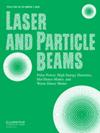高灵敏度汤姆逊光谱法在激光驱动低速率无中子聚变反应实验中的应用
IF 1.9
4区 物理与天体物理
Q4 PHYSICS, APPLIED
引用次数: 1
摘要
由高能激光与物质相互作用驱动的无中子11B(p, α)2α聚变反应已经成为一个热门的研究课题,因为它代表了一个潜在的长期目标,可以替代研究最多的氘-氚反应。然而,这种低速率聚变反应的典型离子产物,特别是α粒子的检测是一个具有挑战性的问题,因为它们的通量很低。在激光驱动质子-硼聚变实验中可以实现的诊断设备之一是汤姆逊光谱仪(TS),它能够根据离子的质量电荷比(a / Z,其中a为质量数,Z为离子的原子序数)检测和区分离子。在这项工作中,我们报告了在意大利弗拉斯卡蒂的ENEA研究中心设计和开发的TS在p + 11B聚变实验背景下的最终测试。我们的装置被设计成具有高灵敏度和对电磁脉冲(EMPs)的强大屏蔽,在距离激光等离子体相互作用点367 mm的PALS激光设施(~ 700 J, ~ 350 ps脉冲)上实施。我们在这里分析了用我们的设备获得的测量信号,重点是评估它们的信号与背景比。尽管在距离激光照射目标如此近的地方存在强烈的EMPs和背景辐射,TS被证明适用于有效探测来自等离子体源的质子和较重的离子。本文章由计算机程序翻译,如有差异,请以英文原文为准。
High-Sensitivity Thomson Spectrometry in Experiments of Laser-Driven Low-Rate NeutronLess Fusion Reactions
The aneutronic 11B(p, α)2α fusion reaction driven by the interaction of high-energy lasers with matter has become a popular topic of research, since it represents a potential long-term goal alternative to the most studied deuterium-tritium reaction. However, the detection of the typical ionic products, especially alpha particles, of this low-rate fusion reaction is a challenging issue, due to their low flux. One of the diagnostic devices that can be implemented in laser-driven proton-boron fusion experiments is a Thomson spectrometer (TS), which is capable of detecting and discriminating ions according to their mass-to-charge ratio (
A
/
Z
, where
A
is the mass number and
Z
is the atomic number of the ions). In this work, we report on the ultimate test of a TS, which was designed and developed at the ENEA Research Centre in Frascati, Italy, in the context of a p + 11B fusion experiment. Our device—designed to have high sensitivity and a robust shielding against electromagnetic pulses (EMPs)—was implemented at the PALS laser facility (∼700 J in ∼350 ps pulses) at a distance of 367 mm from the laser-plasma interaction point. We analyse here the measured signals obtained with our device, focusing on the assessment of their signal-to-background ratio. Despite the presence of strong EMPs and background radiation at such a short distance from the laser-irradiated target, the TS proved to be suitable for effectively detecting protons and heavier ions stemming from the plasma source.
求助全文
通过发布文献求助,成功后即可免费获取论文全文。
去求助
来源期刊

Laser and Particle Beams
PHYSICS, APPLIED-
CiteScore
1.90
自引率
11.10%
发文量
25
审稿时长
1 months
期刊介绍:
Laser and Particle Beams is an international journal which deals with basic physics issues of intense laser and particle beams, and the interaction of these beams with matter. Research on pulse power technology associated with beam generation is also of strong interest. Subjects covered include the physics of high energy densities; non-LTE phenomena; hot dense matter and related atomic, plasma and hydrodynamic physics and astrophysics; intense sources of coherent radiation; high current particle accelerators; beam-wave interaction; and pulsed power technology.
 求助内容:
求助内容: 应助结果提醒方式:
应助结果提醒方式:


